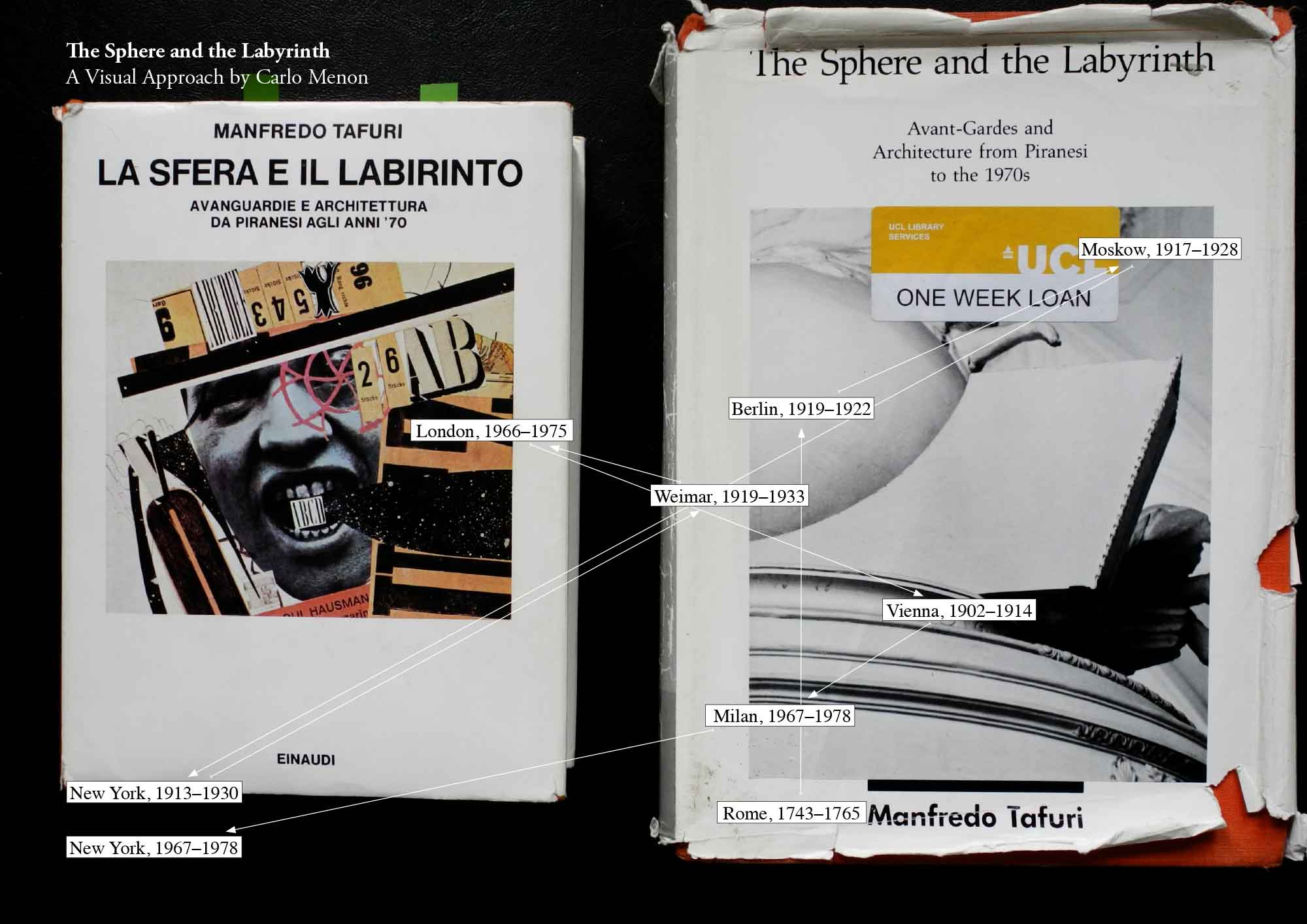
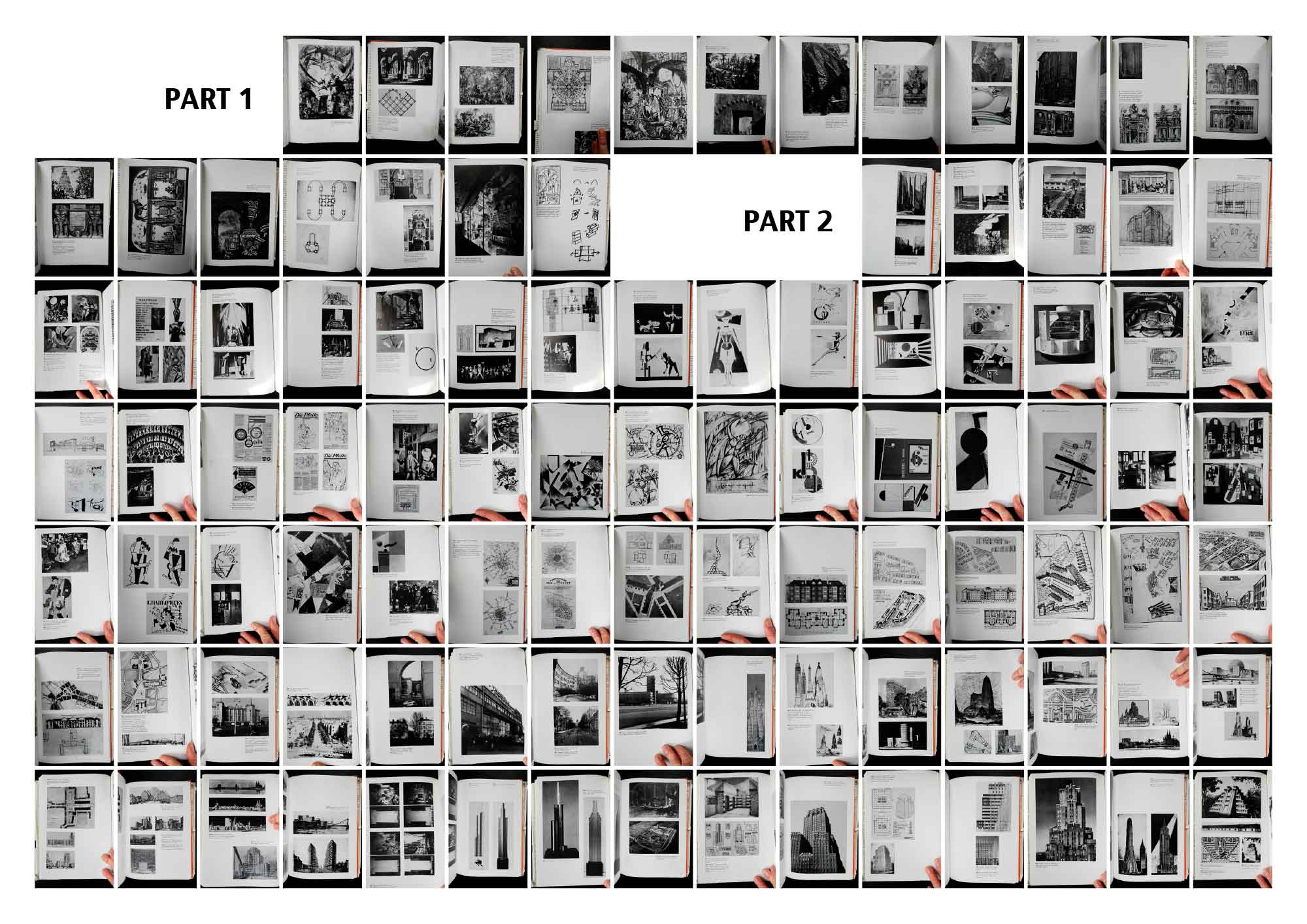
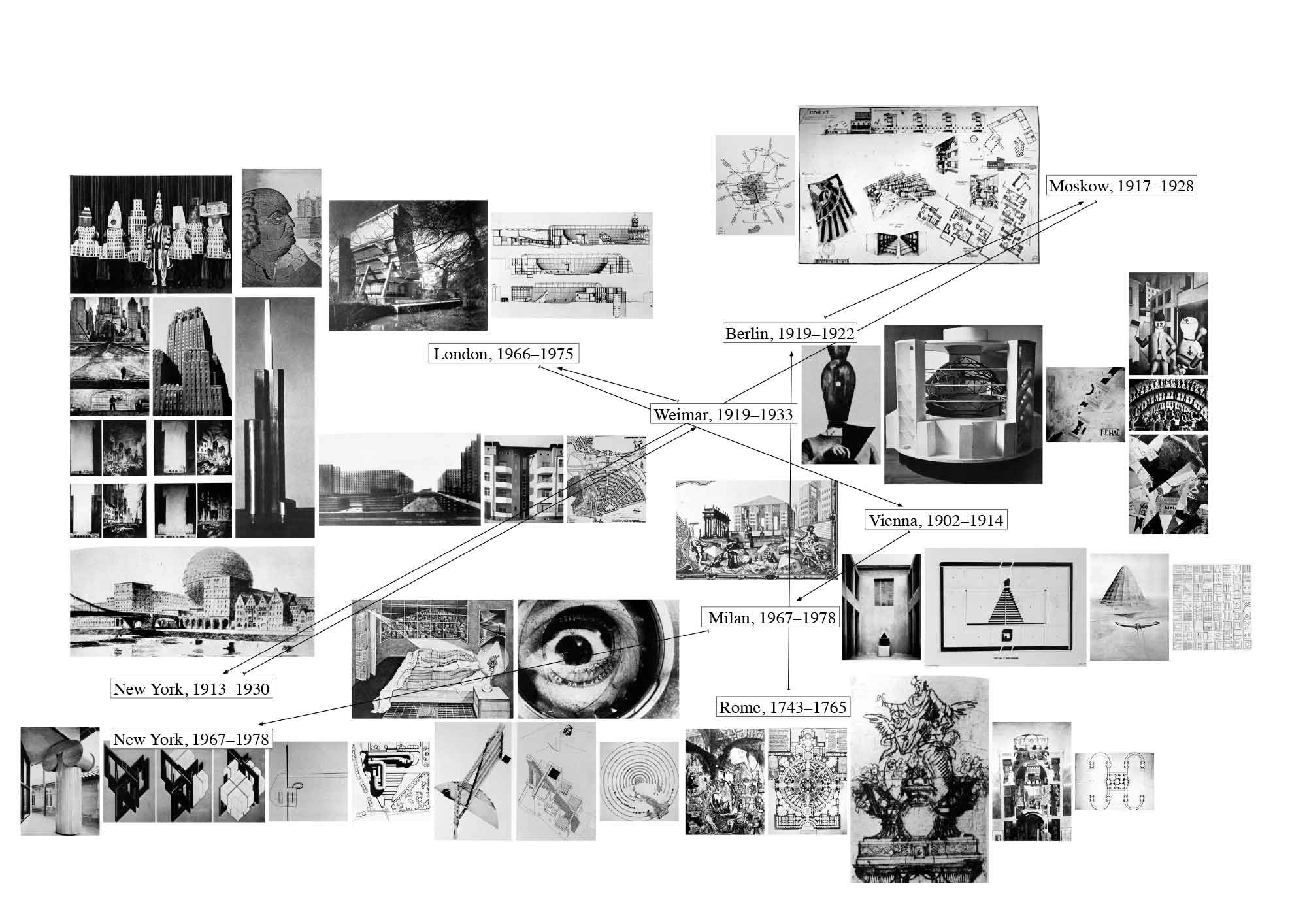
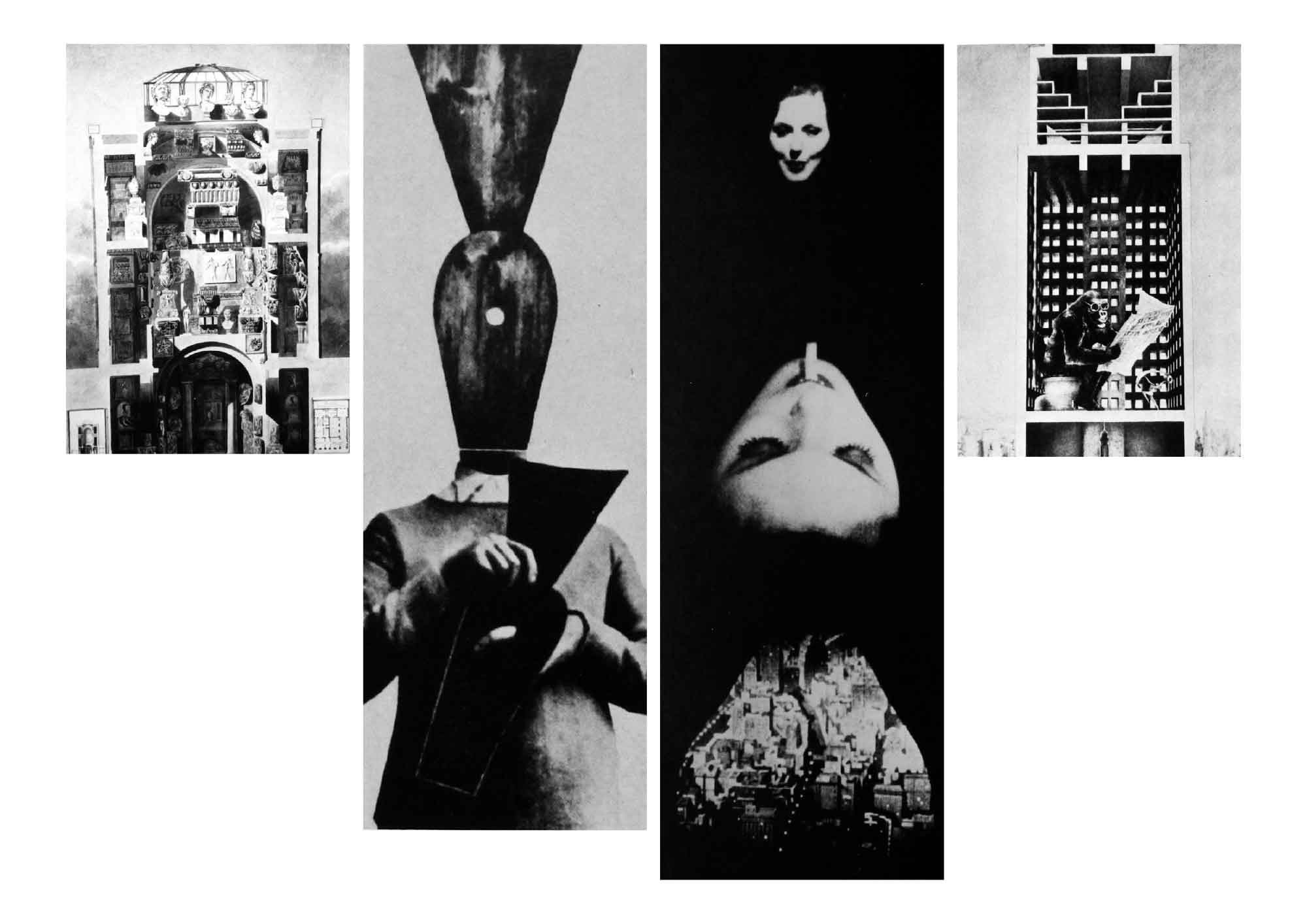
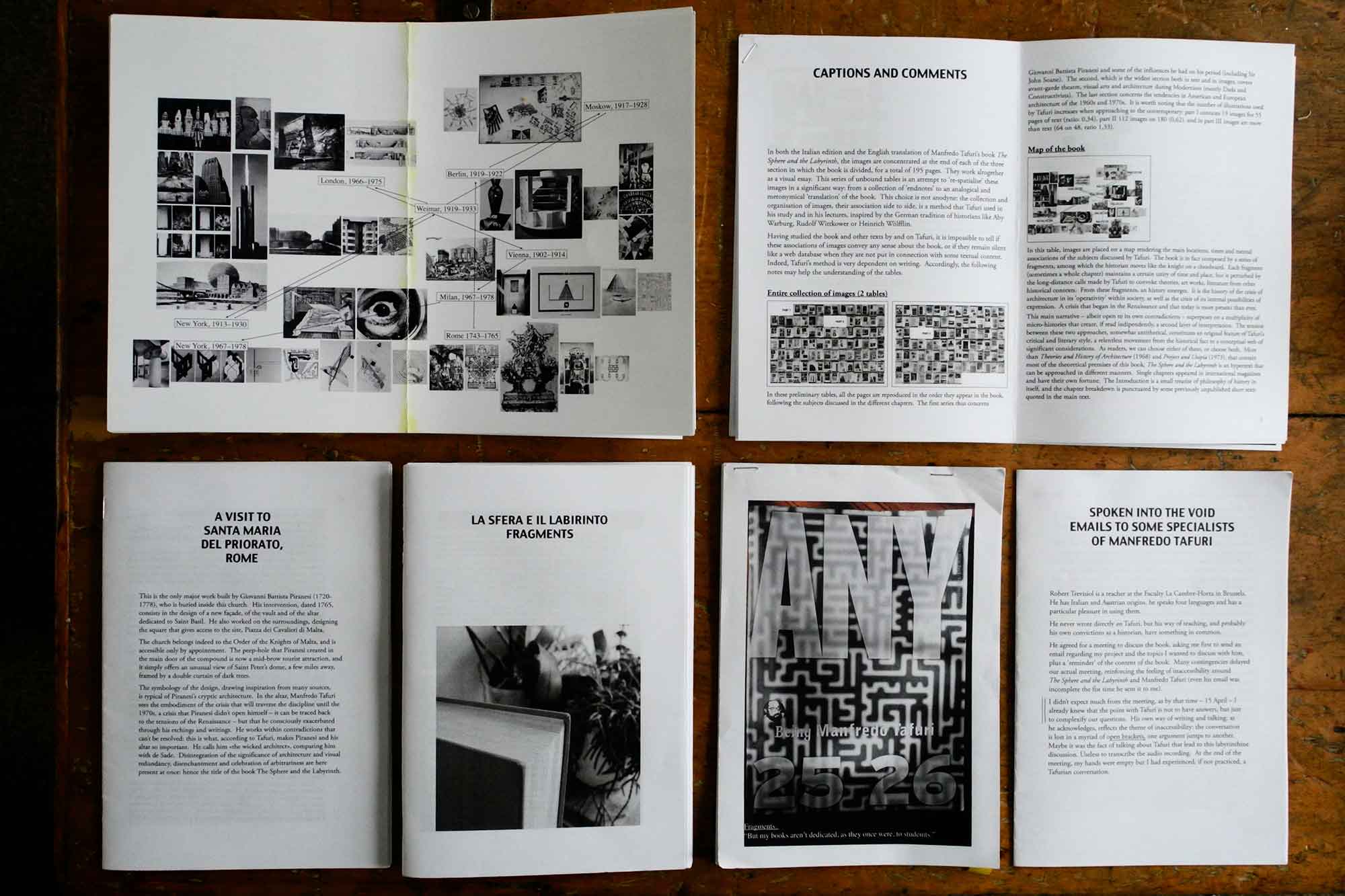
‘Operating on its own constructions, history makes an incision with a scalpel in a body whose scars do not disappear; but at the same time, unhealed scars already mar the
compactness of historical constructions, rendering them problematic and preventing them from presenting themselves as the “truth.”’ (The Sphere and the Labyrinth, p. 12).
Some books, even famous, disappear. So is the case of Manfredo Tafuri’s The Sphere and the Labyrinth. Avant-Gardes and Architecture from Piranesi to the 1970s, published in 1980 and never reprinted. The 1987 English translation underwent a similar fate: both editions are rare and expensive items in second-hand bookstores.
This physical disappearance adds to the sulphurous aura of the book: it is a difficult, haunting book for historians and architects alike, a work that places the reader’s practice in an impossible situation. Through a labyrinthine structure made of fragments, digressions and lapidary statements, Tafuri traces the history of the crisis of architecture in its ‘operativity’ within society, as well as the crisis of its internal possibilities of expression.
More than Theories and History of Architecture (1968) and Project and Utopia (1973) – his previous works that contain most of the theoretical premises of this book – The Sphere and the Labyrinth can be approached in different manners. I chose to render my work across this book as a set of five A5 booklets, cheaply folded and stapled. The first consists in a series of thematic visual tables created from the book’s illustrations; the second and third are made of photographic fragments, issued of my close reading of the text; the fourth relates of my visit to the Santa Maria del Priorato church in Rome, designed by Piranesi and central to the book; the fifth contains email conversations with scholars.
This work was developed within Jane Rendell’s course Theorising Practices / Practising Theories at The Bartlett in 2013, as I was attending the MA Architectural History. It was then presented to MA Students at The Bartlett (London, 2014) and at La Cambre Horta (Brussels, 2017). The booklets were also uploaded to the public web platform Issuu, scoring 1,100 views (retrieved May 2019).
Carlo Menon (Italy, 1981) is a qualified architect and researcher in history and theory based in Brussels, with degrees from La Cambre, Brussels (2006) and The Bartlett, London (2013). His collaborative practice, mostly with partner Sophie Dars, interweaves architectural thinking with the formats of publication, exhibition and education. It includes the publication of the large-format, experimental magazine Accattone.
Carlo attended the Theorising Practices / Practising Theories module in 2013, followed by an ongoing PhD in Architectural History and Theory on little magazines as spaces for critical and creative exchange in architecture (2013-2020, supervised by Professor Jane Rendell and Dr. Penelope Haralambidou and supported by the LAHP London Arts and Humanities Partnership). His publications and lectures deal with authorship and representation in collaborative ventures such as magazines and competitions, both intended as fields of conflictual representations producing a collective result. He teaches in first-year architecture studio at La Cambre Horta, Brussels (ULB).
As educator and/or co-editor of Accattone, he is frequently invited as lecturer and critic at various schools around Europe.
Since my early studies in architecture I have held in consideration the problem of criticism and the question of its agency, depending on its methods of production and distribution. Facing the broad range of methods, instruments and channels to share ideas in architecture, academic writing has seemed to me as limited, both in terms of its proper language and in terms of audience. Challenging – but also activating – the academic context of the module, the concept of site-writing helped me to rethink criticism by establishing more links between theories and publishing practices, in particular by defining the concept of ‘critical editorial devices’ as methods to create critical contents other than the typical essay, in a close relation between ideas, design, support and audience.






































































